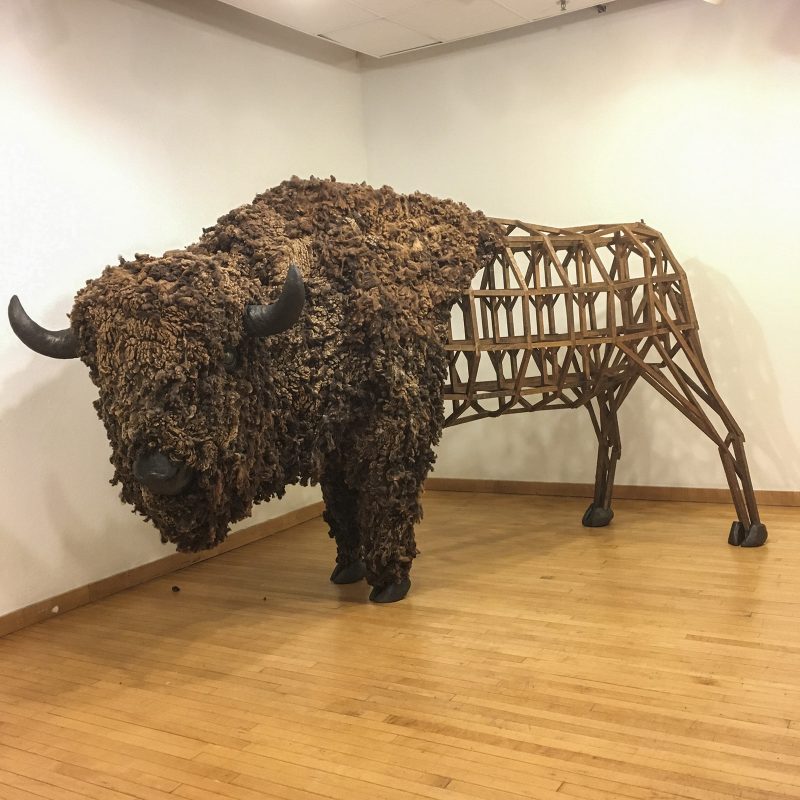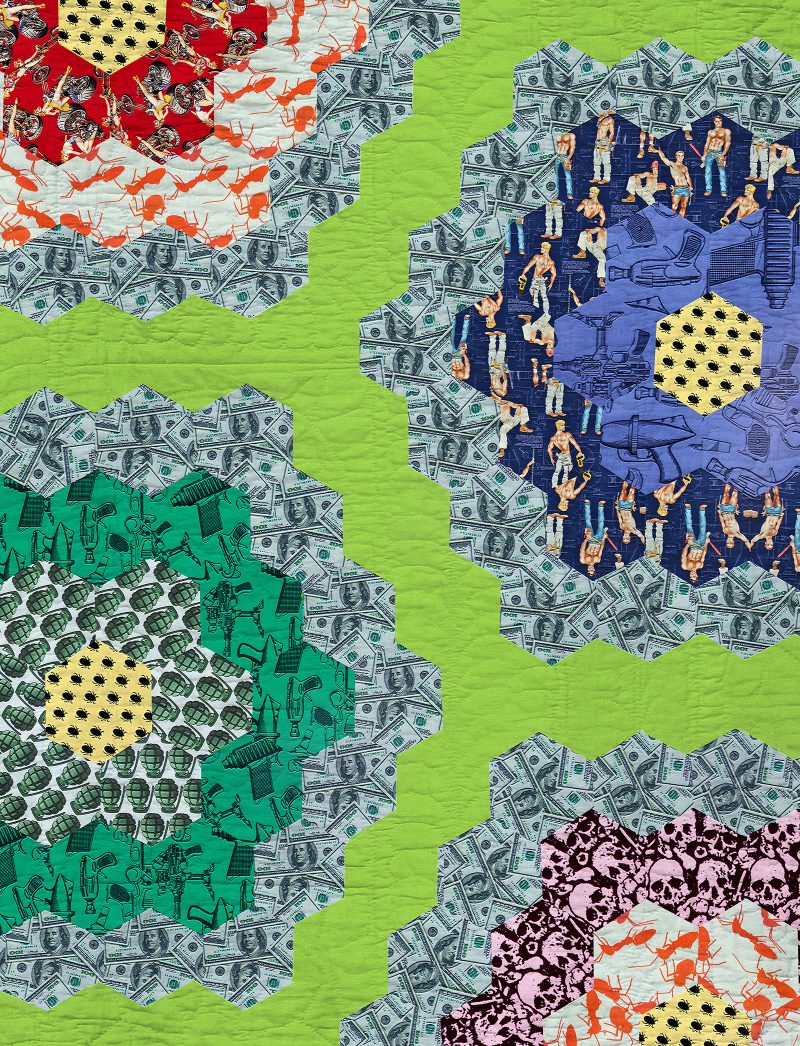Fleisher’s 39th annual Wind Challenge exhibition brings you the works of three contemporary artists, Emily White, Amy Ritter, and Debbie Lerman, selected from over 300 entrants. These artists have used the body–both human and animal–to explore the relationship between animals and their changing environment, the subject of nudity, and fragmented memories of home. The disparate works in the exhibition are unified by the theme of the body and, overall, the idea of the body’s vulnerability seems paramount to all three artists’ thinking.

Where the bison roam
Emily White sculpts and paints endangered species of birds and animals out of materials that have historical and cultural significance. “American Bison/Prairie House” is a massive bison meticulously constructed out of red oak, cast iron, and raw sheep’s wool. This large scale sculpture, measuring 6′ x 10′ x 3.5′, dominates the gallery space just like the real animal used to dominate the pristine landscape it once roamed, before Western settlers came along. The head and the front half of its body are anatomically correct representations of a large male bison. The second half of the animal has been stripped of fur, skin, flesh and bone, consisting solely of a wooden framework resembling a section of a prairie home. Peering at the wooden framework, I could immediately grasp the toll of human innovation on the Bison’s physical presence and offered a stark reminder of the steadily declining Bison population, in tandem with our own insatiable exploitation of natural resources. This juxtaposition of anatomical accuracy and diorama-like cross section simultaneously connects and distances the audience from the animal’s environment, prompting reflection about the consequences of human progress and our relationship to the natural world. “American Bison/Prairie House” was previously featured in A Curious Nature, at the Philadelphia Art Alliance.

You can’t go home again
If Emily White’s bison evokes the wide open spaces and fragile ecosystem of the great American prairie, Amy Ritter’s work deals with the intimacy and transience of growing up in mobile homes. Ritter explores her experiences through the use of materials that relate back to the makeshift homes of her past, like Xerox prints, plywood, and cinder blocks. “Behind the Hedge II,” the only large-scale artwork by Ritter seen in this exhibition, is a reconstruction of a space where her manufactured home was removed, either for relocation or disposal. The artist has used an oversized Xeroxed image of herself leaning on her folded arms that is then encircled by Xeroxed images of a leafy hedge that is meant to represent some sort of a fence or barrier as a way to privatize and aestheticize a home’s perimeter. The sculpture comes off a little self-indulgent but succeeds at conveying a sad longing for a place that the artist left behind, yet still feels deeply rooted to.

Gardens of memory
Using signifiers of domestic life, such as quilts, a mirror, and a reclining figure, Debbie Lerman’s blend of mixed media prints and sculpture attempts to subvert stereotypes about female nudity, roles, and relationships. For “Grandmother’s Flower Garden,” Lerman pieced together photocopied images of dollar bills, strippers, and guns that she sourced from the Internet, arranging them in patterns found in a traditional quilt designs, and draping them over a sleeping (presumably) nude figure. The use of these images to me suggests a darker back story for the nondescript figure that takes refuge under the quilt. Completing the piece is a mirror placed directly beneath the covered sleeping figure that is meant to provide a reflection of the figure underneath it; instead, the viewer will find a hollow shell. Looking at this deeply felt and process-heavy piece about the female body, I wasn’t clear what this work was trying to say. It left me wondering, who is the intended audience for this piece, and for Lerman’s overall work, especially given the pornographic nature showcased in the artist’s other pieces that incorporates the male body?
The 2017 Wind Challenge 2 exhibition offers interesting perspectives that, while at times abstract, still manage to bridge the divide between art and craft in their exploration of the body.
Fleisher’s Wind Challenge 2 exhibition will be showing through May 20.









